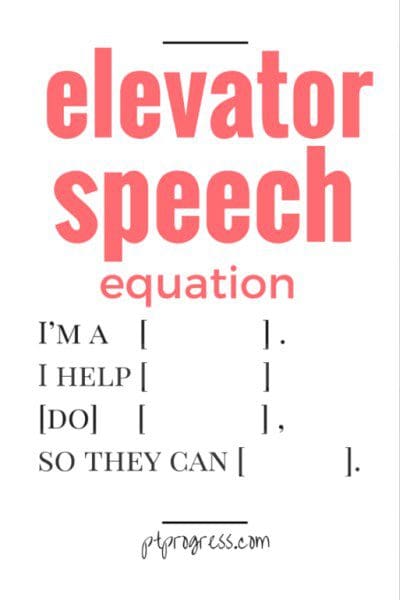Crafting an Elevator Pitch for your Data Science Startup
If you are launching a data science startup, these tips will give you a head start as you seek capital for seed funding or your next level of growth.
By Estelle Liotard, marketing specialist and business consultant.

The term “elevator pitch” originally came from the idea of entrepreneurs and small business owners developing a 30-second pitch when they were asked the question, “What do you do?” This might be at social occasions and events, etc. It was an opportunity for the business owner/entrepreneur to provide a very short (ergo, 30-second) explanation of the value that they provide to their customers or clients, followed by presenting a business card. This activity has always been seen as a tool to “spread the word,” certainly not to seek funding.
The Expansion of the Elevator Pitch
Over time, the elevator pitch definition has expanded significantly and now refers to not just the short little answer to that simple question. It has expanded into pitches that founders of startups use as they seek funding. Obviously, this type of pitch is longer and more detailed, and it occurs when such founders seek seed money to begin or to seek additional funding, once they have launched and need investment dollars to expand.
As a data science founder, you are in a pretty good position. The field is new enough that investors are looking put dollars into startups that can provide these services to small and mid-sized businesses that cannot afford to employ their own data scientist. You don’t’ yet have a huge competition in this market, and that puts you in a favorable position if you can get your pitch right.
The Basics
Even though elevator pitches have expanded and the venues have changed, there are certain basics that you must identify before you even begin to develop your specific pitch. Here they are:
- Make a strong statement about your company. Who are you, and what do you do? Be brief and succinct.
- Provide a problem statement. What problem are you solving for your target audience? In the case of data science services, you are obviously solving the problem of access to big data.
- What value are you bringing to the table? This is the solution to that problem statement.
- Watch your descriptions of what you do and what problems you solve. Investors are not techies, and they do not always understand terms such as algorithms, AI, predictive models, etc. As you describe what you do, put it all in lay terms that anyone can understand. A good piece of advice? Look at some examples of successful startup pitches.

What’s New from the Old Basics
It takes far less money than before to launch a startup. And so, many founders use seed money (their own, family, friends, short-term small loans, crowdfunding, etc.) to develop at least an MVP (minimum viable product) and then show that it is a viable product through the acquisition of a few customers/clients.
This is important. Investors want to see evidence that the product/service is viable. Here is how you do that:
- “Show, don’t tell.” Don’t just say what your data science startup will provide. Show what it has provided for the few clients you have, or provide a visual demonstration of how a specific aspect of your data science service provides its Barring that, show some stats from your initial customers. For example, “Of the 15 clients we initially brought on board, all 15 continue to use our services, after a full year of collaboration.”
- Access to Investors has Changed Dramatically. Seeking investors used to be a rather secretive process. You need to know someone who knew someone who might be interested. The Internet has changed all of that. With crowd-funding venues, lists of “angel investors,” open events that solicit pitches, etc., you can easily find potential funders and design your pitches to reach targeted investors individually. Further, networking can occur online and is no longer geo-specific.
- New Formats for Pitching. Pitching events, where founders went on stage and provided their pitch to an audience of investors, is still one avenue that is common. But lots of founders are getting far more proactive. They are creating video pitches that can be embedded in their websites and, as well, sent out and posted all over the place, without the need for physical presence. And consider the possibilities of reaching out to foreign investors – a whole new world of funding, particularly in the tech sector, such as data science.
Competition is Severe
You may have an amazing team of data science pros, and you may offer amazing solutions to businesses that need your services. But unless you can present yourself in an engaging and compelling way, you are simply another founder looking for money – and there is an ocean of them.
- Be You but Be Them Too
Whether you are writing an elevator pitch to deliver in oral form to potential investors or preparing a script for a video presentation, you need both the elements of a solid pitch and your voice, or you will seem far less than genuine. This is challenging for techies who are not necessarily accomplished with words. As Susan Johnston, a scriptwriter for Studicus, states: “We have a large number of clients with amazing concepts and ideas who simply cannot translate those into compelling voices for their audiences. Techies are often in this position. They need to get professional help because their voice must be genuine and yet also one that potential clients and investors can understand.”
- You are Not a Playwright or a Marketer
An elevator pitch requires a script – and your enthusiasm for your company will not be sufficient. If you intend to create a video presentation (and you must), then understand that it has to be both professional and personal, depending upon your audiences. You have to research those audiences and perhaps develop unique scripts for each of them. And then, of course, the script must be written and practiced before delivery. Again, professional help may be warranted. Joe Lesinski, a scriptwriter for clients of WowGrade, puts it this way: “Writing a script is a specific skill that most do not have. Anyone who is not schooled in this skill will falter. Best to find a decent scriptwriter with experience in marketing video scripts, if you intend to capture an audience.”
The bottom line is this: investors and funders get pitches every day – hundreds of them. You have to somehow stand out among all of this competition, and your amazing data science skills will not be enough to convince. Communication is the key element that may be the most challenging. Follow these guidelines, and your chances will be much greater.
Bio: Estelle Liotard is, first and foremost, a marketing specialist who has consulted with businesses from their founding forward. From her experience, she has also turned to writing about how companies can launch, get funding, and grow. She is a frequent contributor to a number of blogs and an editorial staff member of Trust My Paper, a writing service that works with students and businesses.
Related:
